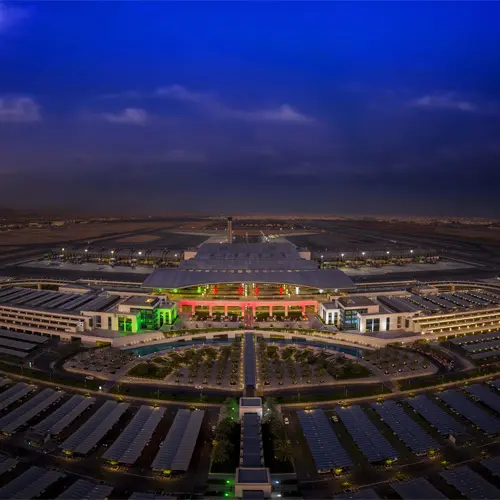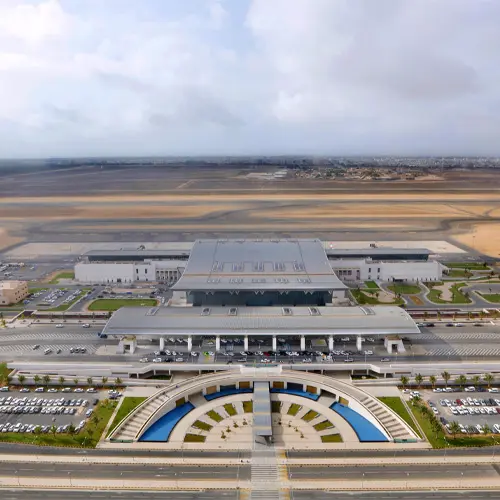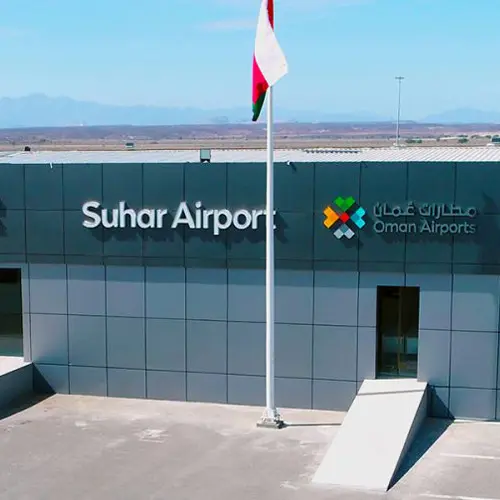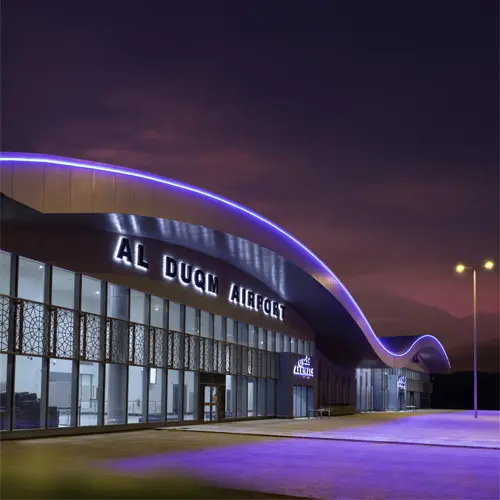Oman Logistics Center
Explore Opportunities in Oman’s Growing Tech and Innovation Ecosystem
Air Transportation
Air transport in Oman is supported by modern airports in Muscat, Salalah, Sohar, and Duqm, driving economic growth, tourism, and global connectivity, with a focus on attracting international visitors.
Muscat Airport

Opened in 1973, Muscat International Airport has expanded to meet growing travel demand, with a new passenger terminal launched in 2018 capable of handling up to 20 million passengers annually.
Salalah Airport

Salalah Airport, Oman’s second busiest, has a 4 km runway, modern navigation systems, a terminal for 2 million passengers, and 27 new buildings, handling 433,000 passengers and 5,868 international flights in 2022.
Sohar Airport

Sohar Airport, opened for domestic flights in 2014 and international flights in 2017, serves the industrial region near Sohar Port, with a new terminal and cargo facility, handling 76,000 passengers in 2022.
Duqm Airport

Duqm International Airport, 14 km from Duqm, has a 4 km runway and current capacity of 500,000 passengers, expandable to 2 million. Serving the Special Economic Zone, it handled 67,500 passengers in 2022.
Special Economic Zones and Free Zones
Oman’s special economic, industrial, and free zones attract national and foreign investments, offering incentives like tax exemptions, simplified licensing, foreign currency use, and profit tax exemptions.
Al Mazyouna
The Free Zone at Al Mazyouna, established near the Oman–Yemen border, serves as a gateway for cross-border trade, offering tax exemptions, full foreign ownership, and simplified customs to attract investment in logistics, manufacturing, and re-exports.
Salalah
The Free Zone at Salalah, launched in 2006 near Salalah Port, focuses on manufacturing, logistics, and petrochemicals, offering investors tax exemptions, 100% foreign ownership, and strategic access to global shipping lanes.
Sohar
The Free Zone at Sohar, established in 2010 next to Sohar Port, targets industries like logistics, metals, and petrochemicals, offering tax breaks, full foreign ownership, and direct access to major regional and global markets.
Duqm
The Special Economic Zone at Duqm, established in 2011, is a major hub for industry, logistics, and tourism, offering investor incentives and world-class infrastructure to drive Oman’s economic diversification.
Khazaen
Khazaen Economic City, launched in 2019 near Muscat, is a major integrated logistics and business hub featuring warehouses, industrial zones, and residential areas, designed to attract investment and support Oman’s economic diversification.

Road Transport
Oman’s road network is modern and well-maintained, with major and secondary roads expanded to ensure safe and smooth transit. Connecting key cities efficiently, the network supports diverse transportation needs and ranks among the top 20 worldwide for quality, according to the Global Competitiveness Report.
Our Journey in Building the Logistics Ecosystem
The event | the year |
Seeb International Airport (currently Muscat International Airport) | 1973 |
Sultan Qaboos Port | 1974 |
Salalah Port + Salalah Airport | 1998 |
Al-Mazyunah Free Zone | 1999 |
Sohar Airport Salalah Free Zone | 2006 |
Duqm Free Zone | 2011 |
Duqm Port Duqm Airport | 2014 |
Oman Logistics Center Customs Declaration System Adam Road _ Haima | 2015 |
Land Transport Law | 2016 |
Al Batinah Expressway | 2018 |
Sinaw - Mahout Road | 2019 |
Eastern Province Highway | 2020 |
Al Khazain Land Port | 2022 |
Khazaen Economic City Omani Maritime Law | 2023 |
Logistics Day | 2024 |




